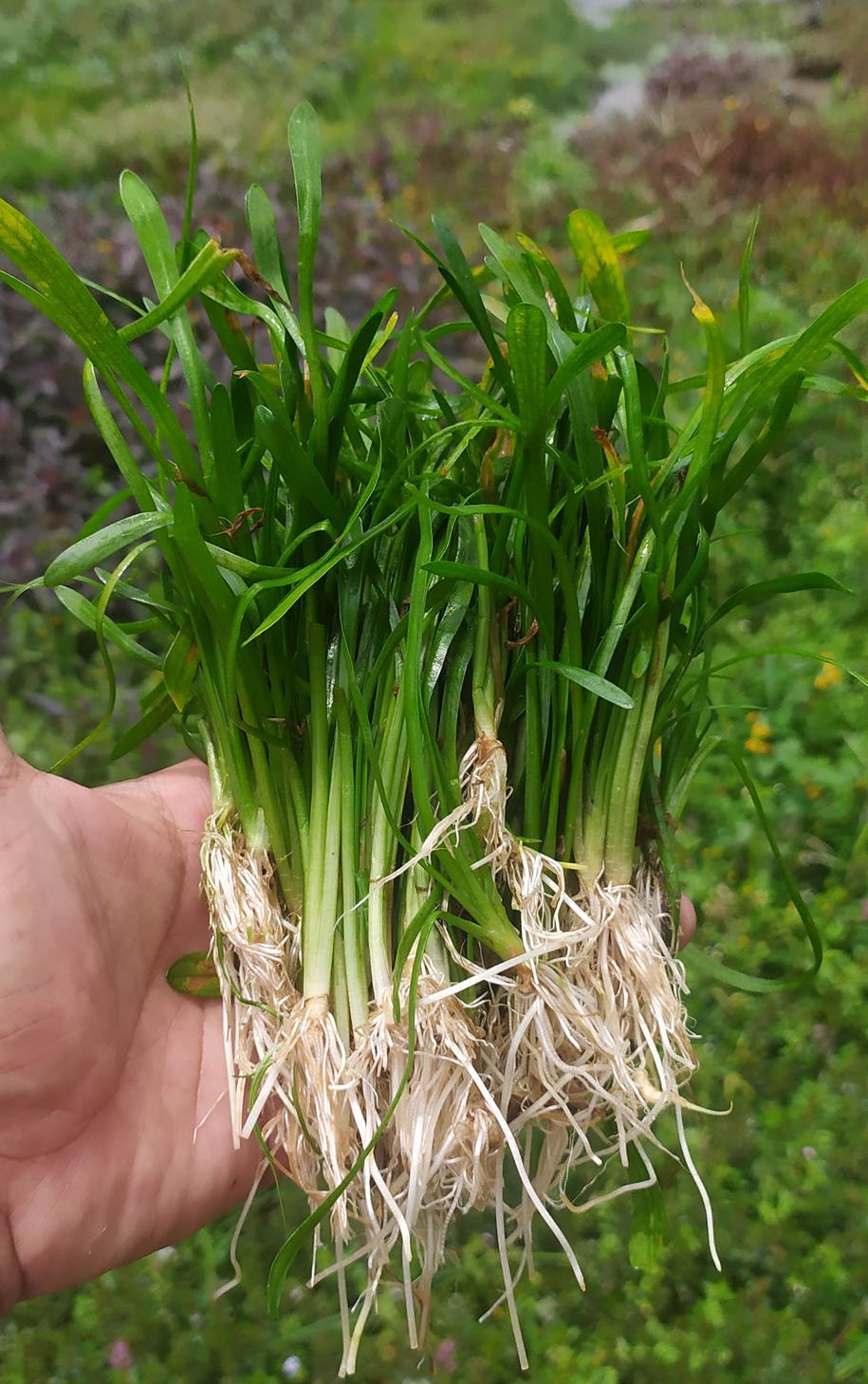 Image 1 of
Image 1 of


Bolbitis Heudelotii
The African Water Fern, scientifically known as Bolbitis heudelotii, is an attractive aquatic plant native to fast-flowing rivers and streams in tropical regions of West and Central Africa. This species is highly valued in the aquarium hobby due to its distinctive, lush foliage, adaptability, and ability to thrive in various freshwater setups.
Physically, Bolbitis heudelotii has finely divided, transparent dark green fronds growing from a rhizome. Each leaf can reach up to 6 to 12 inches (15 to 30 centimeters) or longer under ideal conditions, creating a strikingly delicate and feathery appearance. The plant grows slowly but steadily, gradually developing into dense, attractive clumps.
In the aquarium, Bolbitis requires moderate lighting and prefers shaded areas, which helps prevent algae growth on its delicate leaves. Although not strictly necessary, CO₂ supplementation and regular fertilization significantly improve growth rates and foliage health. A nutrient-rich environment enhances leaf development, encouraging robust, deep-green growth.
Water parameters for optimal growth include temperatures ranging from 72 to 80°F (22 to 27°C), a pH between 5.5 and 7.5, and soft to moderately hard water. The plant thrives best in clean, well-filtered aquariums with moderate water movement, mimicking the fast-flowing streams of its natural habitat. Ensure its rhizome is not buried but attached to driftwood, rocks, or aquarium decorations, allowing it to grow naturally and healthily.
Propagation is easily achieved by dividing the rhizome and attaching the new sections to suitable surfaces, such as driftwood or rocks. Over time, each rhizome piece will develop into an independent, thriving plant.
Overall, Bolbitis heudelotii is an attractive, resilient plant perfect for aquarists aiming to add a touch of elegance and visual complexity to their aquarium. Its unique appearance, ease of propagation, and compatibility with a wide variety of freshwater species make it an appealing choice for aquarists of all experience levels.
The African Water Fern, scientifically known as Bolbitis heudelotii, is an attractive aquatic plant native to fast-flowing rivers and streams in tropical regions of West and Central Africa. This species is highly valued in the aquarium hobby due to its distinctive, lush foliage, adaptability, and ability to thrive in various freshwater setups.
Physically, Bolbitis heudelotii has finely divided, transparent dark green fronds growing from a rhizome. Each leaf can reach up to 6 to 12 inches (15 to 30 centimeters) or longer under ideal conditions, creating a strikingly delicate and feathery appearance. The plant grows slowly but steadily, gradually developing into dense, attractive clumps.
In the aquarium, Bolbitis requires moderate lighting and prefers shaded areas, which helps prevent algae growth on its delicate leaves. Although not strictly necessary, CO₂ supplementation and regular fertilization significantly improve growth rates and foliage health. A nutrient-rich environment enhances leaf development, encouraging robust, deep-green growth.
Water parameters for optimal growth include temperatures ranging from 72 to 80°F (22 to 27°C), a pH between 5.5 and 7.5, and soft to moderately hard water. The plant thrives best in clean, well-filtered aquariums with moderate water movement, mimicking the fast-flowing streams of its natural habitat. Ensure its rhizome is not buried but attached to driftwood, rocks, or aquarium decorations, allowing it to grow naturally and healthily.
Propagation is easily achieved by dividing the rhizome and attaching the new sections to suitable surfaces, such as driftwood or rocks. Over time, each rhizome piece will develop into an independent, thriving plant.
Overall, Bolbitis heudelotii is an attractive, resilient plant perfect for aquarists aiming to add a touch of elegance and visual complexity to their aquarium. Its unique appearance, ease of propagation, and compatibility with a wide variety of freshwater species make it an appealing choice for aquarists of all experience levels.
The African Water Fern, scientifically known as Bolbitis heudelotii, is an attractive aquatic plant native to fast-flowing rivers and streams in tropical regions of West and Central Africa. This species is highly valued in the aquarium hobby due to its distinctive, lush foliage, adaptability, and ability to thrive in various freshwater setups.
Physically, Bolbitis heudelotii has finely divided, transparent dark green fronds growing from a rhizome. Each leaf can reach up to 6 to 12 inches (15 to 30 centimeters) or longer under ideal conditions, creating a strikingly delicate and feathery appearance. The plant grows slowly but steadily, gradually developing into dense, attractive clumps.
In the aquarium, Bolbitis requires moderate lighting and prefers shaded areas, which helps prevent algae growth on its delicate leaves. Although not strictly necessary, CO₂ supplementation and regular fertilization significantly improve growth rates and foliage health. A nutrient-rich environment enhances leaf development, encouraging robust, deep-green growth.
Water parameters for optimal growth include temperatures ranging from 72 to 80°F (22 to 27°C), a pH between 5.5 and 7.5, and soft to moderately hard water. The plant thrives best in clean, well-filtered aquariums with moderate water movement, mimicking the fast-flowing streams of its natural habitat. Ensure its rhizome is not buried but attached to driftwood, rocks, or aquarium decorations, allowing it to grow naturally and healthily.
Propagation is easily achieved by dividing the rhizome and attaching the new sections to suitable surfaces, such as driftwood or rocks. Over time, each rhizome piece will develop into an independent, thriving plant.
Overall, Bolbitis heudelotii is an attractive, resilient plant perfect for aquarists aiming to add a touch of elegance and visual complexity to their aquarium. Its unique appearance, ease of propagation, and compatibility with a wide variety of freshwater species make it an appealing choice for aquarists of all experience levels.





